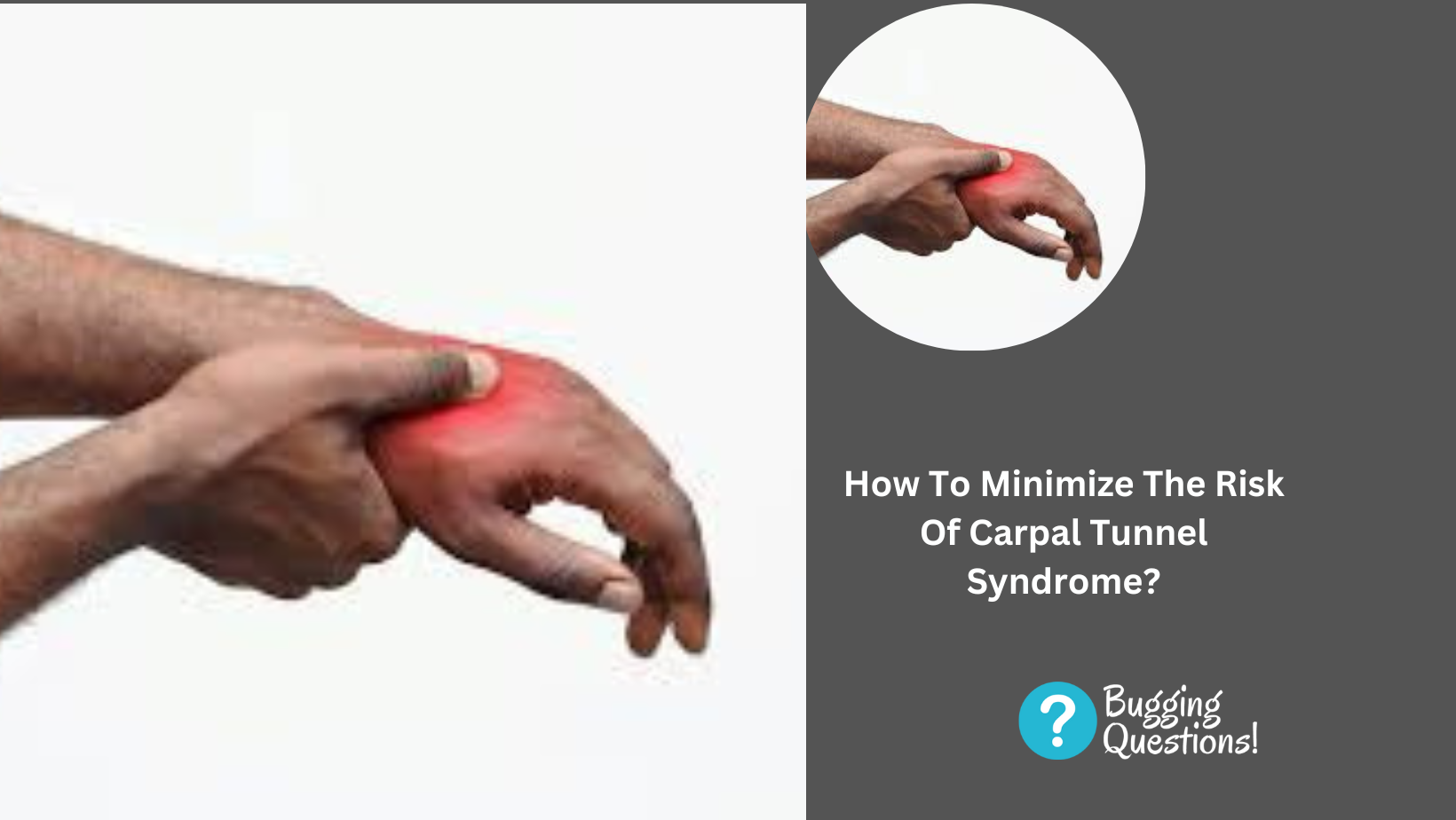Find out ‘How To Minimize The Risk Of Carpal Tunnel Syndrome?’ Carpal tunnel syndrome (CTS) is a painful condition that affects the hand and wrist. It is caused by compression of the median nerve, which runs through the carpal tunnel in the wrist.
CTS is often associated with repetitive tasks, such as typing on a computer or using a mouse. However, it can also be caused by other factors, such as pregnancy, arthritis, or injury. In this article, we will discuss how to minimize the risk of carpal tunnel syndrome.

Ergonomic Workstation Setup
One of the most effective ways to minimize the risk of CTS is to set up an ergonomic workstation. This means positioning your computer monitor, keyboard, and mouse in a way that reduces the strain on your hands and wrists. For example, your keyboard should be at a height that allows your wrists to remain straight and your elbows to be at a 90-degree angle. Your mouse should be positioned close to your keyboard and at the same level.
Take Frequent Breaks
Taking frequent breaks is essential to prevent CTS. You should take a break every hour to stretch your hands and wrists. You can also perform some simple exercises, such as wrist circles, to help reduce the strain on your wrists. Additionally, taking breaks can help reduce eye strain and improve overall productivity.
Maintain Good Posture
Maintaining good posture is important for reducing the risk of CTS. You should sit up straight with your shoulders relaxed and your feet flat on the floor. Avoid leaning forward or slouching, as this can put additional strain on your wrists and hands.
Use The Right Equipment
Using the right equipment can also help minimize the risk of CTS. For example, using a wrist rest can help support your wrists while you type. Additionally, using a mouse pad with a gel wrist rest can help reduce the strain on your wrist while using a mouse. It’s also important to choose a mouse that fits your hand comfortably and has a light touch.
Exercise Regularly
Regular exercise can help reduce the risk of CTS. Exercise can help improve circulation and reduce inflammation, which can help reduce the risk of CTS. Additionally, exercise can help improve flexibility and strength, which can help reduce the strain on your wrists and hands.
Watch Your Diet
Your diet can also play a role in reducing the risk of CTS. Eating a diet rich in antioxidants, such as fruits and vegetables, can help reduce inflammation in your body. Additionally, eating foods rich in omega-3 fatty acids, such as salmon, can help reduce inflammation and improve circulation.
Seek Treatment Early
If you are experiencing symptoms of CTS, it’s important to seek treatment early. Early treatment can help prevent the condition from getting worse and reduce the risk of long-term damage. Treatment options include wearing a wrist brace, taking medication, or undergoing surgery.
Two Conditions That Are Often Misdiagnosed As Carpal Tunnel Syndrome
- Cubital Tunnel Syndrome: This condition is caused by compression of the ulnar nerve at the elbow, which can cause pain, numbness, and tingling in the hand and fingers. The symptoms of cubital tunnel syndrome can be similar to those of carpal tunnel syndrome, leading to misdiagnosis.

- Thoracic Outlet Syndrome: This condition occurs when there is compression of nerves or blood vessels in the area between the collarbone and the first rib. This can cause pain, tingling, and weakness in the arm and hand, which can be mistaken for carpal tunnel syndrome. However, thoracic outlet syndrome can also cause symptoms in the shoulder and neck.
FAQ
Carpal Tunnel Syndrome (CTS) is a common condition that affects the hand and wrist. It occurs when the median nerve, which runs from the forearm into the hand, becomes compressed or squeezed at the wrist. This can cause numbness, tingling, weakness, or pain in the hand, wrist, and forearm.
Carpal Tunnel Syndrome is often caused by repetitive motions, such as typing or using a mouse, that put pressure on the median nerve. Other risk factors include obesity, pregnancy, diabetes, rheumatoid arthritis, and wrist injuries.
The most common symptoms of Carpal Tunnel Syndrome include numbness or tingling in the hand and fingers, especially the thumb, index, and middle fingers. Other symptoms include weakness in the hand, difficulty gripping objects, and pain or discomfort in the hand, wrist, and forearm.
To minimize the risk of Carpal Tunnel Syndrome, you can take several steps, such as:
Take frequent breaks from repetitive tasks, such as typing or using a mouse.
Stretch your hands and wrists regularly to reduce tension and increase flexibility.
Maintain good posture and keep your wrists straight while typing or using a mouse.
Use ergonomic equipment, such as a wrist rest, to reduce pressure on your wrists.
Exercise regularly to improve your overall health and reduce your risk of developing conditions that can lead to Carpal Tunnel Syndrome.
Treatment options for Carpal Tunnel Syndrome include non-surgical and surgical interventions. Non-surgical options include rest, ice, compression, and elevation of the affected hand, as well as wearing a wrist splint or brace to immobilize the wrist and reduce pressure on the median nerve. In some cases, medications or corticosteroid injections may also be used to relieve symptoms. If non-surgical treatments are ineffective, surgery may be necessary to release the pressure on the median nerve.









